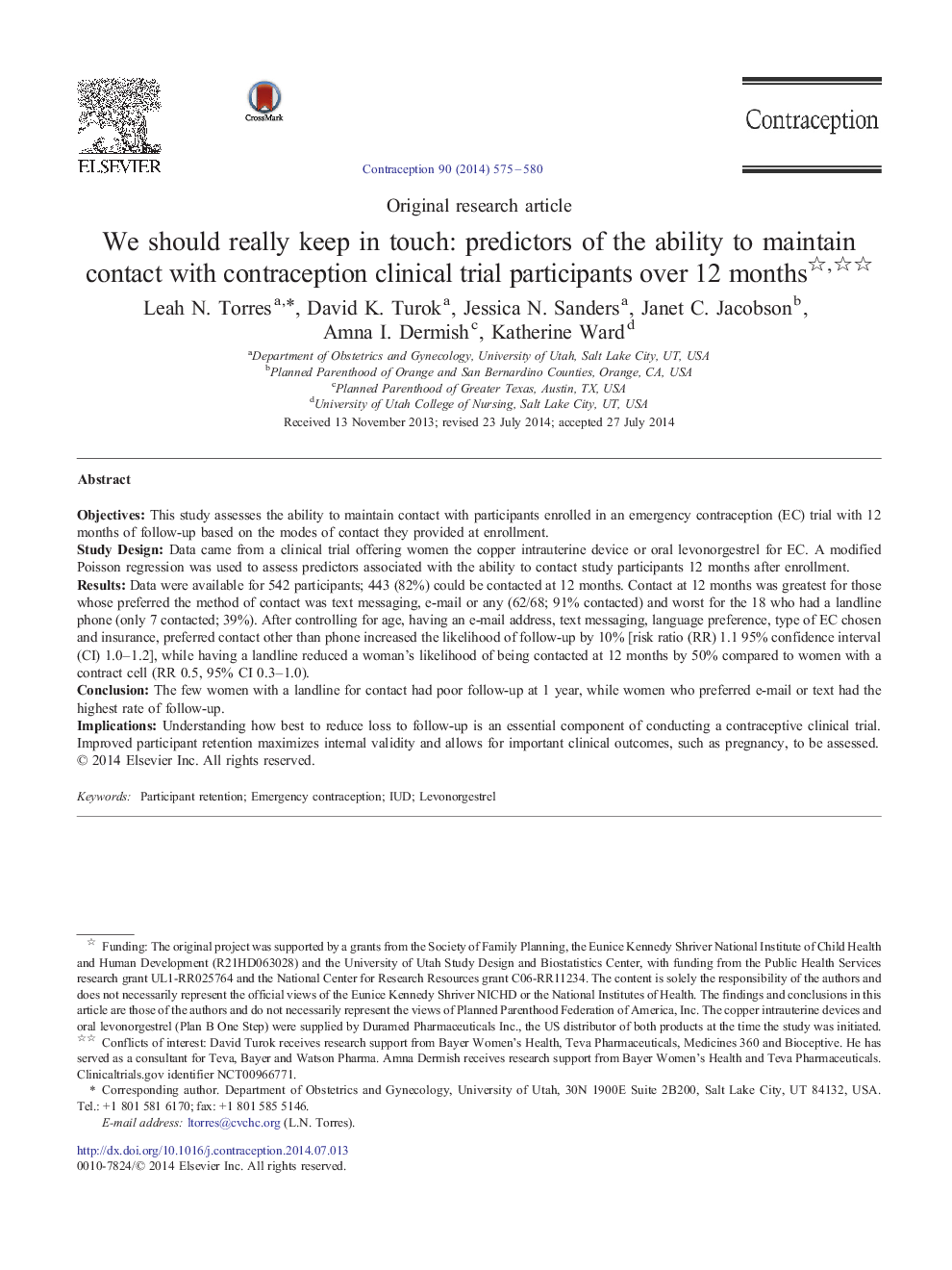| Article ID | Journal | Published Year | Pages | File Type |
|---|---|---|---|---|
| 3913151 | Contraception | 2014 | 6 Pages |
ObjectivesThis study assesses the ability to maintain contact with participants enrolled in an emergency contraception (EC) trial with 12 months of follow-up based on the modes of contact they provided at enrollment.Study DesignData came from a clinical trial offering women the copper intrauterine device or oral levonorgestrel for EC. A modified Poisson regression was used to assess predictors associated with the ability to contact study participants 12 months after enrollment.ResultsData were available for 542 participants; 443 (82%) could be contacted at 12 months. Contact at 12 months was greatest for those whose preferred the method of contact was text messaging, e-mail or any (62/68; 91% contacted) and worst for the 18 who had a landline phone (only 7 contacted; 39%). After controlling for age, having an e-mail address, text messaging, language preference, type of EC chosen and insurance, preferred contact other than phone increased the likelihood of follow-up by 10% [risk ratio (RR) 1.1 95% confidence interval (CI) 1.0–1.2], while having a landline reduced a woman's likelihood of being contacted at 12 months by 50% compared to women with a contract cell (RR 0.5, 95% CI 0.3–1.0).ConclusionThe few women with a landline for contact had poor follow-up at 1 year, while women who preferred e-mail or text had the highest rate of follow-up.ImplicationsUnderstanding how best to reduce loss to follow-up is an essential component of conducting a contraceptive clinical trial. Improved participant retention maximizes internal validity and allows for important clinical outcomes, such as pregnancy, to be assessed.
